
Journal of Optical Communications and Networking
Scope & Guideline
Exploring the Frontiers of Optical Technology
Introduction
Aims and Scopes
- Optical Network Design and Architecture:
Research on the design and architecture of various optical networks, including passive optical networks (PONs), elastic optical networks, and multi-core fiber networks, focusing on optimizing network performance and resource allocation. - Machine Learning and AI Applications:
Utilization of machine learning and artificial intelligence techniques for enhancing the performance of optical networks, including applications in quality of transmission (QoT) estimation, anomaly detection, and resource management. - Security in Optical Communications:
Exploration of security mechanisms in optical networks, including quantum key distribution, physical-layer security, and advanced encryption methods to safeguard data against unauthorized access. - Hybrid Optical-Wireless Systems:
Investigation of integrated optical and wireless communication systems, particularly in the context of 5G and beyond, focusing on architecture, performance, and operational challenges. - Real-Time Network Management and Automation:
Development of automated systems for real-time monitoring, management, and orchestration of optical networks, leveraging software-defined networking (SDN) and telemetry techniques. - Innovations in Optical Components and Technologies:
Research into novel optical components, such as transceivers, amplifiers, and switches, aimed at improving the efficiency and capabilities of optical communication systems.
Trending and Emerging
- Quantum Networking and Security:
There is a significant increase in research related to quantum networking technologies, including quantum key distribution and quantum-safe security protocols, which address the growing need for secure communication in an increasingly digital world. - 5G and Beyond Optical Networks:
Research focusing on the integration of optical technologies in 5G and future networks has gained momentum, exploring how optical solutions can enhance capacity, reduce latency, and support diverse applications. - Intelligent Networks and Automation:
Emerging themes around intelligent networks utilizing AI and machine learning for network management, optimization, and anomaly detection are trending, reflecting the industry's shift towards automation and data-driven decision-making. - Sustainable and Green Networking Solutions:
There is a growing emphasis on sustainability within optical networking research, with studies focusing on energy-efficient designs, resource allocation strategies, and the environmental impact of optical technologies. - High-Speed and Flexible Optical Systems:
Research into high-speed optical systems and flexible architectures, such as reconfigurable optical networks and advanced modulation formats, is on the rise, driven by the demand for increased bandwidth and adaptability in communication systems.
Declining or Waning
- Traditional Network Architectures:
Research focused on conventional network architectures, such as simple point-to-point optical links, has become less common as the field shifts towards more complex and integrated solutions that leverage advanced technologies. - Basic Optical Communication Protocols:
Studies centered around basic optical communication protocols have seen a decline as researchers increasingly explore more sophisticated and adaptive techniques, such as those enabled by SDN and machine learning. - Non-Quantum Network Security Approaches:
Traditional security methods that do not incorporate quantum technologies are becoming less relevant as the focus shifts towards quantum key distribution and other advanced security measures that offer greater protection in network communications. - Single-Mode Fiber Technologies:
Research specifically focused on single-mode fiber technologies has waned in favor of multi-core and spatial division multiplexing approaches that promise higher capacity and performance.
Similar Journals
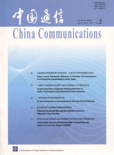
China Communications
Exploring the Latest Trends in China's Communication LandscapeChina Communications is a prestigious peer-reviewed journal published by the China Institute of Communications, dedicated to advancing the field of telecommunications and information technology. With an impressive Q1 ranking in both Computer Networks and Communications and Electrical and Electronic Engineering, this journal stands out as a leading source of cutting-edge research and innovative solutions in the engineering domain. The journal aims to provide a platform for scholars and practitioners to share their findings on the latest trends, technologies, and methodologies impacting the communications landscape in China and beyond. It is particularly noted for its high visibility in the academic community, as demonstrated by its Scopus rankings, which place it in the top percentiles for both fields. Through its commitment to quality content, China Communications contributes significantly to the advancement of knowledge, making it an invaluable resource for researchers, professionals, and students alike.
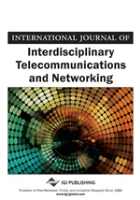
International Journal of Interdisciplinary Telecommunications and Networking
Fostering Collaboration Across Technological FrontiersThe International Journal of Interdisciplinary Telecommunications and Networking, published by IGI Global, serves as a pivotal resource for researchers, professionals, and students in the fields of telecommunications and networking. With an ISSN of 1941-8663 and an E-ISSN of 1941-8671, this journal aims to bridge the gap between various disciplines, presenting cutting-edge research and innovative solutions that address contemporary challenges in these rapidly evolving fields. Although currently not indexed for Open Access, the journal seeks to foster an inclusive platform for interdisciplinary dialogue, encouraging contributions that explore the intersections of technology, policy, and practice. As a dynamic publication, it aspires to enhance the understanding of telecommunication systems and their impact on society, making it an essential addition to the library of any scholar or practitioner looking to stay at the forefront of technological advancements.

WIRELESS PERSONAL COMMUNICATIONS
Driving Innovation in Signal Processing and ProtocolsWIRELESS PERSONAL COMMUNICATIONS, established in 1994 and published by Springer, is a vital resource for researchers and professionals in the fields of Computer Science Applications and Electrical and Electronic Engineering. With an impressive impact factor, this journal has achieved a Q2 ranking in both relevant categories as of 2023, demonstrating its significance in advancing knowledge and fostering innovation in wireless communication technologies. The journal encompasses a comprehensive scope, covering topics such as mobile networking, signal processing, and communication protocols, making it essential reading for academic and industry stakeholders. Although primarily subscription-based, it remains committed to disseminating high-quality research that shapes the future of wireless technologies. Housed in the Netherlands, WIRELESS PERSONAL COMMUNICATIONS continues to foster a global dialogue among scholars and practitioners, contributing to the burgeoning field of personal and mobile communication systems.
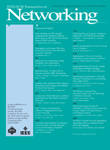
IEEE-ACM TRANSACTIONS ON NETWORKING
Driving Excellence in Networking ScholarshipIEEE-ACM Transactions on Networking, published by the esteemed IEEE-Institute of Electrical and Electronics Engineers Inc., stands as a pivotal source of research within the realms of Computer Networks and Communications, Computer Science Applications, Electrical and Electronic Engineering, and Software. With an impressive impact factor and recognized as a Q1 journal across multiple categories in 2023, it ranks among the top journals in its field, reflecting its influential scholarship and rigorous peer-review process. The journal has been continuously published since 1993 and features cutting-edge research that addresses the complexities and advancements in networking technologies. While it does not offer open access, its research is accessible through various academic platforms, ensuring that scholars, practitioners, and students can engage with and benefit from its rich content. The Scopus ranking further highlights its significance, with notable percentiles in engineering and computer science disciplines. This journal is essential for anyone seeking to stay ahead in the rapidly evolving area of networking.
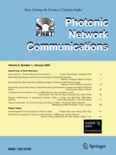
PHOTONIC NETWORK COMMUNICATIONS
Fostering Collaboration in Photonic and Network Research.PHOTONIC NETWORK COMMUNICATIONS, published by SPRINGER, is an esteemed journal dedicated to advancing the fields of atomic and molecular physics, optics, computer networks and communications, as well as electrical and electronic engineering. Since its inception in 1999, this journal has become a pivotal platform for researchers and professionals to disseminate innovative findings and foster collaborative discourse within these dynamic disciplines. With a current impact factor that underscores its relevance, this publication has consistently ranked in the third quartile across multiple academic categories for 2023, indicating its significance in the research community. Although it operates under a subscription model, it maintains high visibility among its peers, contributing to impactful advancements in hardware and architecture, software, and photon-based communication systems. With the support of a diverse international readership, PHOTONIC NETWORK COMMUNICATIONS continues to play a crucial role in shaping the future of photonics and network communications.

Cluster Computing-The Journal of Networks Software Tools and Applications
Advancing Innovation in Network Software and ToolsCluster Computing - The Journal of Networks Software Tools and Applications, published by Springer, is a premier academic journal catering to the vibrant fields of computer networks and software technologies. With an impressive impact factor and recognized as a Q1 journal in both Computer Networks and Communications and Software categories for 2023, it ranks within the top echelons of its field, boasting a Scopus rank of #50 out of 395 and #59 out of 407 respectively, highlighting its influence and reach. The journal, which has been in continuous publication since 2005, serves as a vital platform for groundbreaking research, offering insightful articles and tools that drive innovation in network computing. Researchers, professionals, and students are invited to contribute to and benefit from the dynamic discourse presented in this journal, which is pivotal for advancing knowledge and enhancing practical applications in a rapidly evolving technological landscape.

JOURNAL OF COMMUNICATIONS AND NETWORKS
Exploring Breakthroughs in Network Architecture and Data ManagementJOURNAL OF COMMUNICATIONS AND NETWORKS, published by the Korean Institute of Communications Sciences (KICS), is a leading academic journal that has been at the forefront of the fields of Computer Networks and Communications as well as Information Systems since its inception in 1999. With a strong commitment to advancing research in these critical areas, this journal has achieved a prestigious Q1 ranking in both domains as of 2023, reflecting its significant impact and innovative contributions to the field. The journal features original research, review articles, and technical notes that address the latest advancements in communication technologies, network architecture, and data management strategies. As a vital resource for researchers, practitioners, and students, it not only disseminates valuable findings but also fosters collaboration and knowledge exchange among diverse disciplines within the communications landscape. With a consistent annual volume, the journal continues to shape the future of communications science and offers authors an esteemed platform to showcase their work.

Internet Technology Letters
Pioneering Research in AI and Communication Technologies.Internet Technology Letters, published by John Wiley & Sons Ltd, is a dynamic and rapidly evolving journal that focuses on the innovative applications and developments within the realms of Artificial Intelligence, Computer Networks and Communications, Information Systems, and Software. With its E-ISSN 2476-1508 and a defined convergence period from 2018 to 2024, this journal seeks to address emerging trends and critical challenges confronting the digital landscape today. Recognized in the Q3 quartile range across multiple computer science categories in 2023, it serves as a valuable resource for researchers, professionals, and students seeking to advance their knowledge and stay updated on significant technological advancements. While currently not an open-access journal, Internet Technology Letters holds a prominent position on platforms like Scopus, ranked within the middle percentiles, reflecting its contribution to the academic community. The journal aims to foster connectivity between academia and industry, encouraging submissions that promote interdisciplinary collaboration and innovation. By creating a platform for sharing groundbreaking research, Internet Technology Letters plays a crucial role in shaping future technological landscapes.

TELECOMMUNICATION SYSTEMS
Pioneering Insights in Telecommunications TechnologyTelecommunication Systems is a premier academic journal published by Springer, dedicated to advancing the field of telecommunications and information systems. With an ISSN of 1018-4864 and an E-ISSN of 1572-9451, this journal has established itself as a crucial resource in the realms of Electrical and Electronic Engineering, evidenced by its esteemed ranking in the Q2 category and a 70th percentile standing in Scopus ranks. Since its inception in 1993, it has provided an important platform for original research, innovative solutions, and theoretical developments in telecommunications technologies. The journal's objectives include fostering interdisciplinary collaboration and exploring the latest advancements in communication systems, making it essential reading for researchers, professionals, and students alike. With its commitment to quality and relevance, Telecommunication Systems remains at the forefront of scholarly communication in the dynamic telecommunications sector.
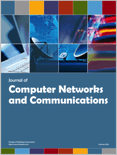
Journal of Computer Networks and Communications
Connecting Ideas, Innovating NetworksThe Journal of Computer Networks and Communications is a premier open-access journal published by HINDAWI LTD, dedicated to advancing the field of computer networks and communications. With an ISSN of 2090-7141 and an E-ISSN of 2090-715X, this journal has been accessible to researchers since its inception in 2011, promoting widespread dissemination of knowledge in this rapidly evolving discipline. Based in Egypt, the journal's editorial standards are upheld through a rigorous peer-review process, contributing to its strong academic reputation. As of 2023, it holds a commendable Q2 ranking in Computer Networks and Communications and a Q3 ranking in Information Systems within its category quartiles. According to Scopus rankings, it occupies the 141st and 143rd positions in its respective fields, showcasing its relevance and influence in the academic community. The journal's mission is to publish high-quality research that addresses contemporary challenges in networking technologies and systems, making it an essential resource for researchers, professionals, and students seeking to innovate and excel in these fields.